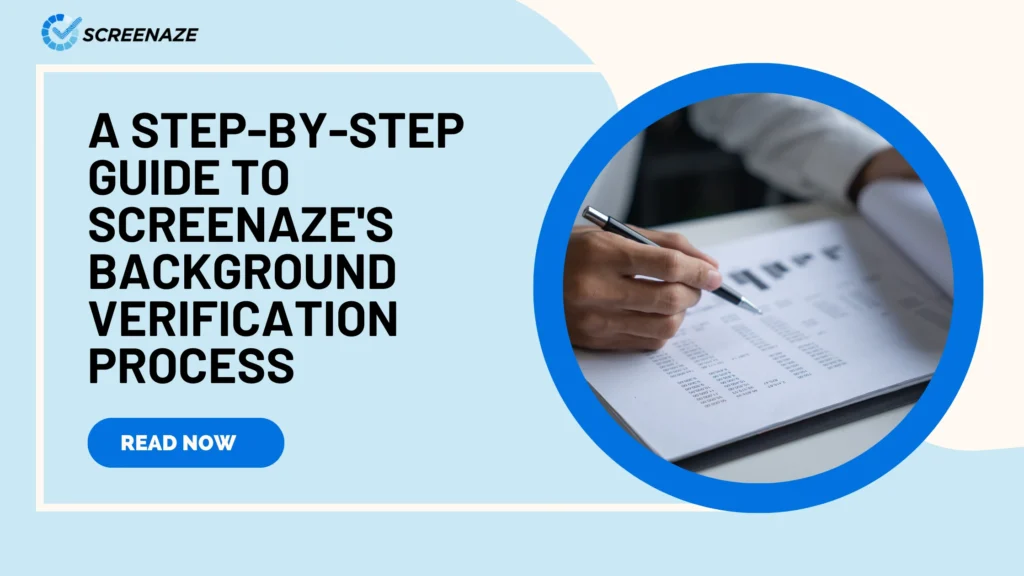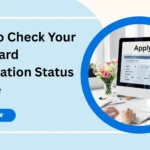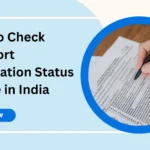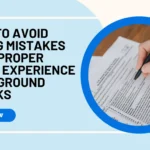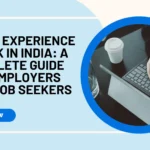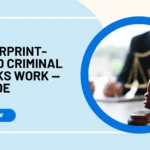Introduction
Hiring the right candidate is one of the most important decisions for any organization. Beyond skills and qualifications, employers need confidence that new hires are trustworthy, reliable, and aligned with company values. That’s where background verification plays a crucial role. A well-structured background check not only helps reduce risks but also builds a safe and secure workplace.
At ScreenAze, we understand how critical accuracy, speed, and transparency are in the hiring process. Our background verification solutions are designed to provide employers with clear, reliable, and legally compliant information before making final decisions. From identity checks to criminal records, employment history, education verification, and reference checks, ScreenAze ensures every step is thorough and efficient.
In this guide, we’ll take you through a step-by-step breakdown of ScreenAze’s background verification process, so you know exactly how it works. Whether you’re an HR professional, a business owner, or someone exploring pre-employment screening for the first time, this guide will give you insights into what to expect and why choosing ScreenAze can make the difference. Let’s walk through the process and see how we simplify background checks while maintaining the highest standards of accuracy and compliance.
Table of Contents
Initiating the Verification Request
The very first step in ScreenAze’s background verification process begins with initiating the verification request. This is where employers or HR managers formally submit a request to ScreenAze to conduct a background check on a candidate. It is one of the most crucial stages because the accuracy and completeness of the information shared here directly impact the entire process. Below, we’ll break down this step in detail:

1. Employer Registers the Request
The process starts when the employer or HR department logs into the ScreenAze platform. Here, they can create a new verification request by filling out basic candidate details. This usually includes:
- Candidate’s full name
- Date of birth
- Contact information
- Position applied for
- Type of background checks required (identity, education, criminal, employment, etc.)
By allowing employers to customize the type of verification, ScreenAze ensures that the process is tailored to the role’s requirements.
2. Selecting the Verification Package
ScreenAze offers different verification packages depending on the level of scrutiny an employer requires. For example:
- Basic Checks – Identity and criminal record verification.
- Standard Checks – Education, employment, and identity.
- Comprehensive Checks – All-inclusive verification, including references and address validation.
Employers can choose a package or create a customized request to match their compliance needs.
3. Gathering Candidate Consent
Before any background check begins, it is legally required to obtain the candidate’s consent. ScreenAze makes this step simple by providing a secure digital consent form. The candidate receives a link via email or SMS and can review the details of the background check before granting authorization.
This step ensures:
- Compliance with privacy and labor laws.
- Transparency in the process.
- Protection for both the employer and the candidate.
4. Uploading Candidate Documents
Employers or candidates are asked to upload relevant documents to support the verification. These may include:
- Government-issued ID proof.
- Academic certificates.
- Previous employment letters or pay slips.
- Address proof (utility bills, rental agreements, etc.).
ScreenAze’s secure portal allows for encrypted document uploads, ensuring the confidentiality of sensitive data.
5. Verification Request Acknowledgment
Once the request is submitted, ScreenAze generates an acknowledgment receipt. Employers can track the progress of the verification in real time through the platform’s dashboard. The system updates the status at every stage, providing transparency and peace of mind.
6. Data Validation by ScreenAze Team
Before moving to the next stage, the ScreenAze verification team cross-checks the submitted information for accuracy and completeness. If any information is missing or unclear, the employer or candidate is contacted immediately. This step helps avoid delays later in the process.
7. Why This Step Matters
Initiating the verification request is not just about filling in details—it sets the foundation for the entire background check. A carefully completed request ensures:
- Faster processing times.
- Reduced chances of errors or rejections.
- Higher accuracy in final reports.
- Compliance with regulatory requirements.
Candidate Consent and Information Submission
Once the verification request is initiated, the next critical step in ScreenAze’s background verification process is obtaining candidate consent and gathering necessary information. This stage ensures that the background check is both legally compliant and accurate, forming the foundation for the checks that follow.
1. Why Candidate Consent is Important
Consent is more than just a formality—it is a legal requirement. Employers cannot conduct a background check without the candidate’s approval. ScreenAze ensures this process is seamless by:
- Providing a digital consent form accessible via email or SMS.
- Offering clear information about what checks will be conducted (identity, criminal, employment, etc.).
- Ensuring the candidate can review and acknowledge before moving forward.
2. Digital Consent Workflow
ScreenAze simplifies the process through a secure online portal. The steps usually include:
- Candidate receives a link to the consent form.
- Candidate reads details of the verification process.
- Digital signature or electronic acceptance is recorded.
- Timestamp and verification logs are securely stored for compliance.
This digital-first approach saves time and eliminates paperwork delays.
3. Information Submission by the Candidate
After consent, the candidate is asked to provide essential information. Typical details include:
- Personal Information: Full name, date of birth, contact number, and current address.
- Identity Proofs: Government-issued ID numbers (such as passport, Aadhaar, PAN, or driver’s license depending on region).
- Educational Details: University name, degree, year of passing, and supporting documents.
- Employment History: Company names, roles, duration of employment, references, or payslips.
- Address History: Permanent and current residential addresses.
All this information is uploaded securely through ScreenAze’s encrypted platform.
4. Document Upload Process
ScreenAze provides a step-by-step document upload interface. Candidates can upload scanned copies or images of required documents. The system checks for:
- File clarity (no blurred or cropped scans).
- Document authenticity features (signatures, seals, barcodes).
- Secure storage with encryption to maintain confidentiality.
This ensures data is safe from unauthorized access while being easily accessible to verification teams.
5. Data Accuracy and Validation
To prevent errors, candidates are prompted to cross-check details before submission. For example:
- Double-checking spelling of names and dates of birth.
- Ensuring documents match the entered information.
- Verifying employment dates to avoid mismatches.
ScreenAze’s portal also runs automated validation checks to catch common errors early.
6. Transparency for Candidates
Unlike traditional background checks where candidates remain uninformed, ScreenAze ensures transparency by:
- Allowing candidates to track their submission status.
- Sending confirmation once consent and documents are received.
- Providing updates if additional documents are required.
This reduces anxiety for candidates and speeds up cooperation.
7. Compliance and Legal Safeguards
Obtaining proper consent protects employers from violating privacy laws and labor regulations. ScreenAze ensures compliance with:
- GDPR (General Data Protection Regulation).
- Local employment laws based on country or region.
- Industry-specific requirements (such as finance or healthcare).
This gives employers peace of mind knowing that the process is both ethical and lawful.
8. Example Scenario
Let’s say a candidate is applying for a healthcare position where both education and criminal checks are mandatory. The HR initiates the request, and the candidate receives a consent form link. The candidate reviews the scope of checks, signs digitally, and uploads their government ID, nursing degree, and previous hospital employment records. ScreenAze validates these submissions, confirming everything is ready for the next stage.
9. Why This Step Matters
This stage is vital because:
- It ensures legal authorization for background checks.
- Provides the raw data needed for accurate verification.
- Builds trust and cooperation with the candidate.
- Prevents delays by catching missing or incorrect information early.
The Verification Process
After obtaining candidate consent and collecting all necessary information, the core phase begins: the verification process itself. This is where ScreenAze’s expertise comes into play, ensuring that every piece of data submitted by the candidate is accurately validated and cross-checked with official and trusted sources. The goal is to confirm the authenticity of the candidate’s background while eliminating errors, fraud, or misrepresentation.
1. Identity Verification
The first stage is confirming that the candidate is who they claim to be. ScreenAze uses:
- Government Databases: PAN, Aadhaar, Passport, or Driver’s License checks (depending on the country).
- Biometric Validation: Where applicable, matching photo IDs with government-held records.
- Cross-Matching: Ensuring details like name, date of birth, and address match across multiple documents.
2. Employment Verification
Employers need to confirm that the candidate’s work history is genuine. ScreenAze verifies this through:
- Direct Employer Contact: Reaching out to HR or supervisors of previous organizations.
- Official Records: Payslips, offer letters, and relieving letters.
- Third-Party Databases: Checking if the company exists and is registered.
This process highlights employment gaps, false job claims, or inflated job titles.
3. Education Verification
Academic qualifications are one of the most misrepresented areas in resumes. ScreenAze ensures authenticity by:
- Contacting universities or colleges directly.
- Validating certificates, transcripts, and degree authenticity.
- Checking against government or academic boards for legitimacy.
This step helps employers avoid hiring candidates with fake or unrecognized qualifications.
4. Criminal Record Check
Safety and compliance are critical in today’s workplace. ScreenAze runs a comprehensive criminal background check by:
- Searching national and local police databases.
- Checking court records and litigation history.
- Screening against global criminal databases and watchlists.
This ensures candidates do not pose risks of fraud, theft, or misconduct.
5. Address Verification
An often-overlooked but vital part of the process, address verification confirms:
- Current and permanent addresses through utility bills or rental agreements.
- Physical verification where required, using local field agents.
- Cross-checks with ID proofs to avoid discrepancies.
This step helps establish residential stability and prevents fraudulent address claims.
6. Financial and Credit Checks
For roles involving financial responsibility, ScreenAze conducts credit history checks:
- Verifying loan repayment history.
- Checking credit score from authorized credit bureaus.
- Identifying defaults, fraud cases, or high-risk financial behavior.
This is especially important in banking, insurance, and finance-related positions.
7. Drug and Health Screening (if required)
Certain industries (like healthcare, aviation, or security) require additional drug tests. Screenaze partners with certified labs to:
- Conduct controlled drug tests.
- Share verified medical reports.
- Ensure candidates meet workplace health and safety standards.
8. Reference Verification
To validate soft skills, ScreenAze cross-checks professional references by:
- Contacting listed references directly.
- Confirming candidate’s role, responsibilities, and conduct.
- Identifying red flags such as misbehavior, performance issues, or false claims.
9. Use of Technology and Automation
ScreenAze integrates AI and automation to speed up the verification process:
- Automated Database Checks – reducing manual delays.
- AI-powered Fraud Detection – spotting inconsistencies in documents.
- Real-time Updates – employers can track progress on the portal.
This balance of automation and human expertise ensures accuracy and efficiency.
10. Quality Control and Review
Before finalizing, each verification undergoes multi-level quality checks:
- Internal audit teams cross-verify findings.
- Discrepancies are flagged and re-investigated.
- Only confirmed results are passed to the employer.
Accessing and Understanding the Report
Once the verification process is completed, ScreenAze compiles all the findings into a comprehensive background verification report. This step is crucial because the report is the final product that employers use to make hiring decisions. It is designed to be clear, transparent, and easy to interpret, ensuring that HR managers and recruiters can confidently assess the candidate’s background.
1. How Employers Access the Report
ScreenAze ensures a smooth, secure, and hassle-free way to access reports:
- Secure Online Portal: Employers can log in to ScreenAze’s dashboard with unique credentials.
- Real-Time Notifications: Once the report is ready, employers receive alerts via email or SMS.
- Downloadable Reports: Reports can be downloaded in PDF format for easy sharing with internal decision-makers.
- Role-Based Access: Only authorized personnel (like HR managers) can view reports, ensuring confidentiality.
This digital-first approach makes the process faster, more secure, and user-friendly.
2. Structure of the Report
The report is designed to be clear and structured, making it easy for employers to review. It generally includes:
- Candidate Information: Basic details like name, DOB, contact info, and ID numbers.
- Verification Categories: Identity, education, employment, criminal, address, credit, etc.
- Status Indicators: Clear labels such as Verified, Pending, Discrepancy Found, or Unable to Verify.
- Supporting Evidence: Copies of verified documents, communication records, or database matches.
This structure ensures employers don’t have to dig through complicated data—they see the most important results instantly.
3. Understanding Key Sections
Each section of the report provides vital insights:
- Identity Verification – Confirms candidate’s identity against official records.
- Employment History – Lists verified job titles, employers, and durations.
- Education Records – Confirms degrees, certifications, and issuing institutions.
- Criminal Background – Flags any matches in criminal databases or court records.
- Address Verification – Validates current and permanent residences.
- Credit/Financial Check – Shows candidate’s financial responsibility where applicable.
- Reference Check – Provides qualitative feedback from professional references.
Employers can focus on sections most relevant to the role.
4. Use of Status Indicators
ScreenAze simplifies complex verification outcomes using color-coded or status markers:
- ✅ Clear/Verified – No issues found, candidate data is accurate.
- ⚠️ Discrepancy – Conflicting or unverifiable information detected.
- ❌ Red Flag – Serious issues such as criminal records, fake education, or fraudulent claims.
- ⏳ Pending – Awaiting confirmation from institutions or authorities.
This visual approach allows HR teams to make decisions faster without analyzing lengthy reports.
5. Benefits of the Report Format
- Clarity: Eliminates ambiguity with concise summaries.
- Comprehensive: Covers multiple areas in one report.
- Evidence-Based: Backed with verified data and documents.
- Decision-Friendly: HR teams can act on findings without additional research.
6. Interpreting the Report for Decision Making
Employers can use the report strategically:
- Green Signal (Clear) – Candidate is safe to hire.
- Yellow Signal (Discrepancy) – Employer may request clarification from the candidate.
- Red Signal (Critical Issue) – Candidate may not be suitable for the role.
This traffic-light approach simplifies decision-making.
7. Example Scenario
Suppose a company is hiring for a senior finance manager role. The report shows:
- Identity and Employment: Verified with no issues.
- Education: MBA confirmed with the issuing university.
- Criminal Check: No records found.
- Credit Check: One small default flagged but resolved.
The HR manager interprets this as a minor concern that doesn’t affect suitability for the role. Hence, the candidate is cleared for final hiring.
8. Why This Step Matters
Accessing and understanding the report is where the entire background verification effort pays off. A well-structured, easy-to-read report:
- Saves HR managers valuable time.
- Ensures compliance with hiring regulations.
- Reduces risks by highlighting red flags early.
- Builds confidence in the hiring decision.
Conclusion
ScreenAze’s background verification process is designed to bring transparency, reliability, and confidence to hiring decisions. Each step, from initiating the verification request to accessing the final report, is carefully structured to eliminate risks of fraud, misrepresentation, and non-compliance. By starting with accurate information, securing candidate consent, conducting thorough checks, and delivering easy-to-understand reports, ScreenAze ensures that employers have everything they need to build a trustworthy workforce.
The true strength of this process lies in its balance of technology and human expertise. Automated tools speed up database checks, while expert reviewers validate findings to guarantee accuracy. Employers can not only save time and resources but also stay fully compliant with privacy and labor laws.
In today’s competitive environment, where one wrong hire can impact productivity and reputation, background verification is no longer optional—it’s essential. With ScreenAze, businesses gain more than just verification; they gain peace of mind and a strategic advantage in hiring. By following this step-by-step process, organizations can ensure safer workplaces, smarter decisions, and long-term success with the right talent.
